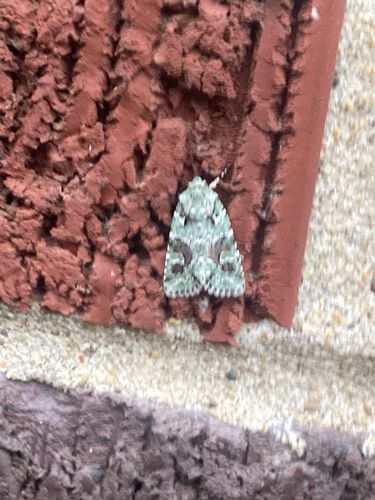Green Lacewing Moth
Scientific Name: Valeria oleagina or similar species within the Noctuidae family, exact ID is difficult without more detailed imaging or geographical context
Order & Family: Lepidoptera, Noctuidae (Owlet Moths)
Size: Typically measures 35-45 mm (wingspan).

Natural Habitat
Found in woodlands, forests, gardens, and other areas where their host plants (various deciduous trees and shrubs) are present. They are well-camouflaged and often rest on tree trunks, rocks, or walls during the day.
Diet & Feeding
Adult moths are thought to not feed or feed on nectar from flowers, decaying fruit, or tree sap. The larvae (caterpillars) are polyphagous, feeding on a wide variety of deciduous trees and shrubs, including oak, willow, birch, and alder.
Behavior Patterns
The moth is nocturnal and attracted to lights. The larvae (caterpillars) are typically active feeders, consuming leaves of host plants. Adults generally feed on nectar or other liquids, if they feed at all. The camouflage coloration helps them blend into tree bark, rocks, or other surfaces during the day to avoid predators.
Risks & Benefits
Generally beneficial as part of the natural ecosystem, contributing to pollination (though not primary pollinators) and acting as a food source for birds and other insectivores. They are not known to be pests or pose any risks to humans or agriculture.
Identified on: 9/2/2025